Development of alternative energy in the private sector. Difficult path to customer
Five or six years ago, in regions far from Moscow, we heard about alternative energy only with the edge of our ears, and then on TV and occasionally on the Internet. The first stations had to be sold, literally circling farms, and explaining how, why and for what all of this solar energy. At first, people simply refused to believe that it was possible to receive electricity from the sun like this, and to use ordinary electrical appliances, being very far from home. However, the first stations were sold, and the process of the so-called “non-broadcasting” began, which is commonly called “word of mouth” by the common people. This could not have happened, since one farmer, having traveled to visit another, and seeing how he watches Tricolor TV and sits with the light, could not sleep well.
The price, of course, confused people at first, because, again, people used to pay a little for electricity. But this barrier was overcome, and closer to 2010, in cooperation with the Ministry of Tourism and Entrepreneurship of the Altai Republic, we managed to write and defend a subsidy program for energy-saving measures. It was the first, in fact, experience of social entrepreneurship, when the population in the form of farmers, business in the person of us and the state managed to solve an understandable social request - to electrify farms and increase the return from them.
Within the framework of this article, it is difficult to assess the economic effect in numbers, but one can say that many technological processes in these farms have accelerated significantly - milk was processed faster by electric separators than manually, sheep were sheared faster, shearing machines, water in the troughs was pumped on time and in the right amounts. Over the past three years, we are witnessing a trend - those who work on a farm with our established stations are not really and tend to a “civilization” with its advantages and disadvantages. Ordinary farmers immediately set up satellite television, washing-machines (yes, yes, automatic ones), especially advanced ones use 3G-Internet if operator coverage allows it, or VSAT-Internet. In a word, they do not feel detached from the general rhythm.
')
You can see a short chronology with comments, as well as other reflections on this topic under the cat:
So, the first stations were small solutions from 300 W to 1500, rarely up to 3 kW.
One of the first customers, FSUE "Altai State Nature Reserve".
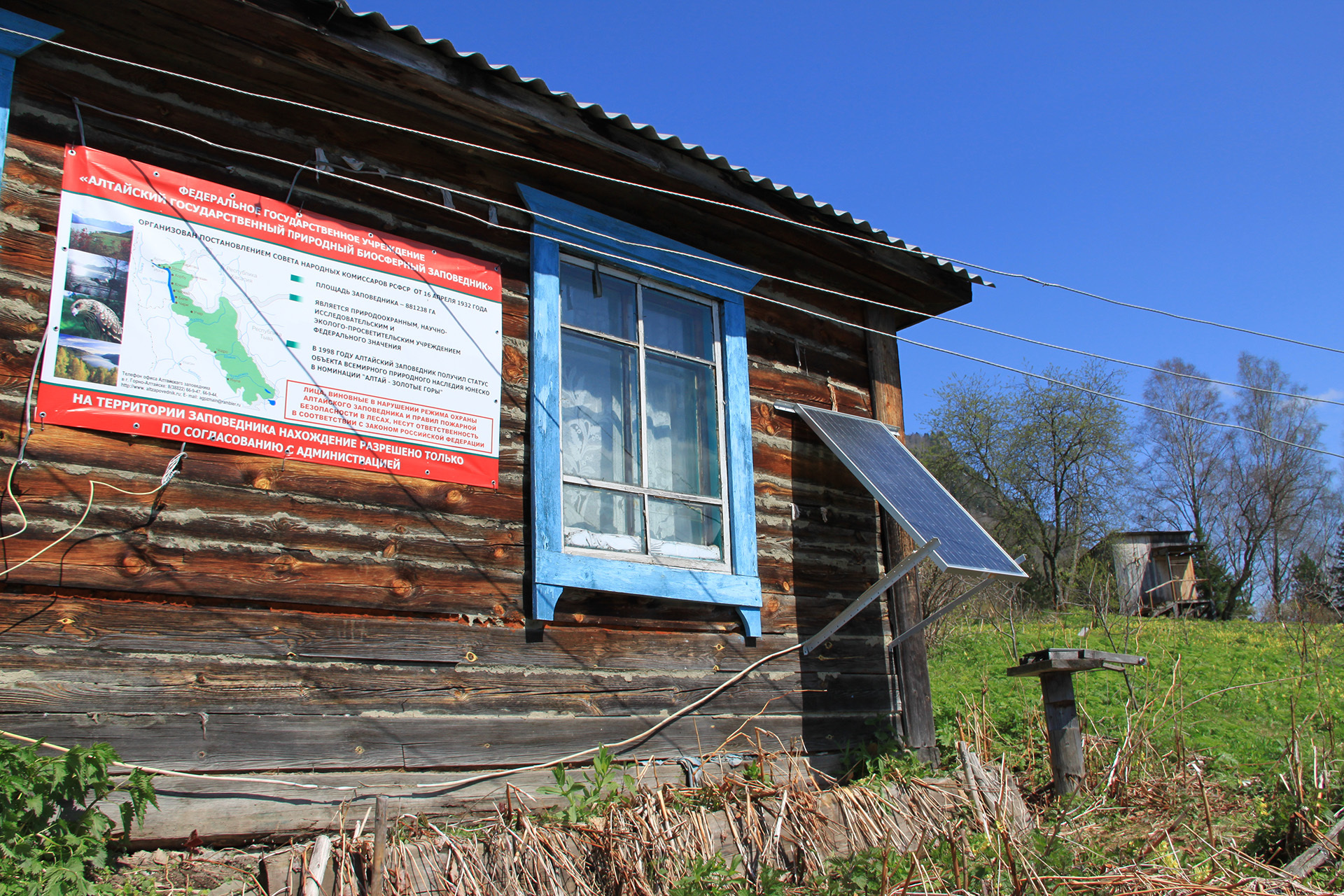
(300W small station.)
But this is a rarity: Soviet-made solar batteries of the 70s on a homemade rotary device:

By the way, a special stand was made for training and demonstration purposes, which explains the principle of the station:
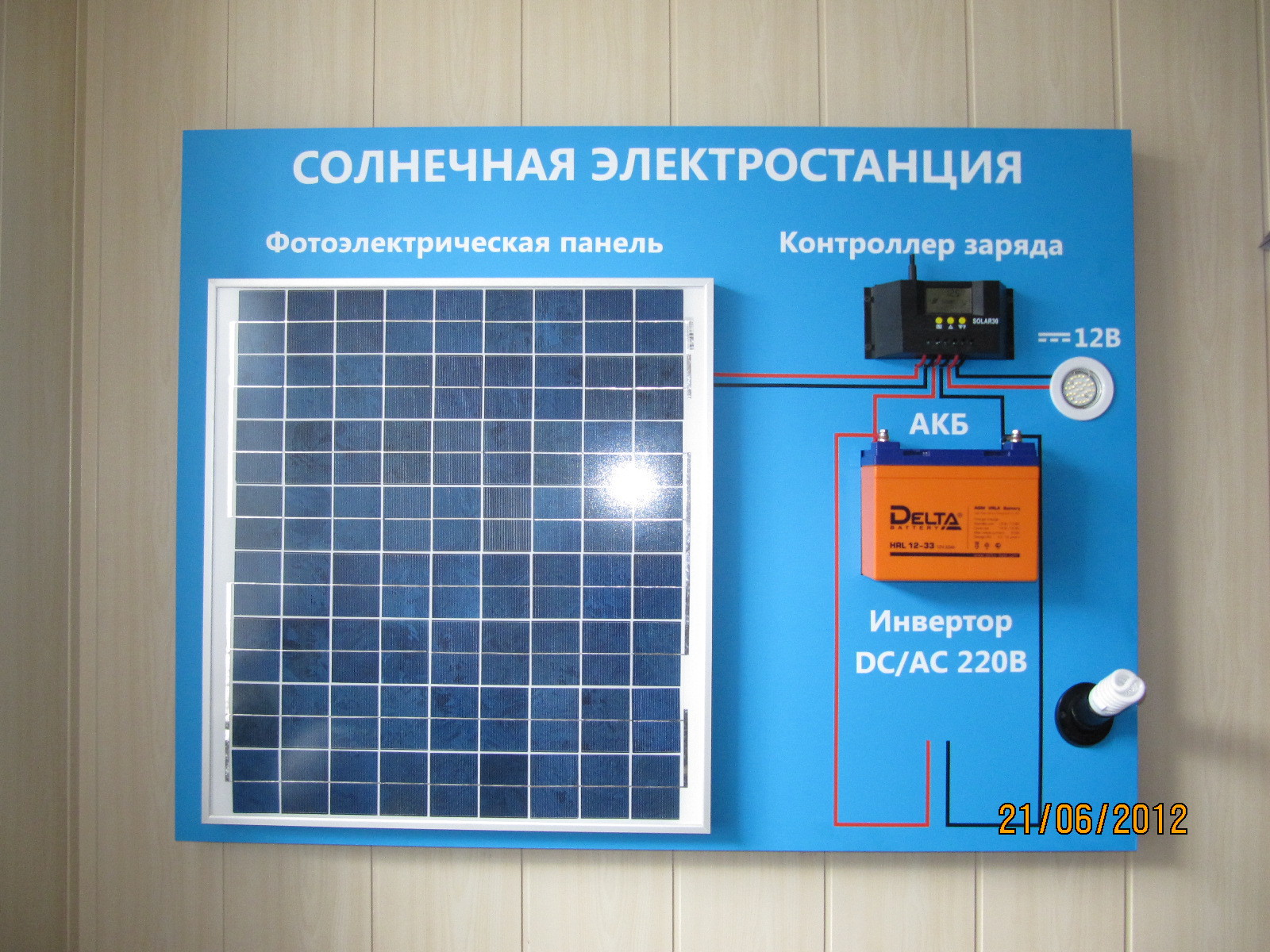
In the meantime, the capacities of the stations sold grew. Those stations that were 300-600 watts each were taken by the clients themselves, and there are not a large number of photographs, since the installation is elementary and any average man can handle it.
Owners of tourist bases began to apply. They put houses in picturesque places, but did not have a connection to the common grid.
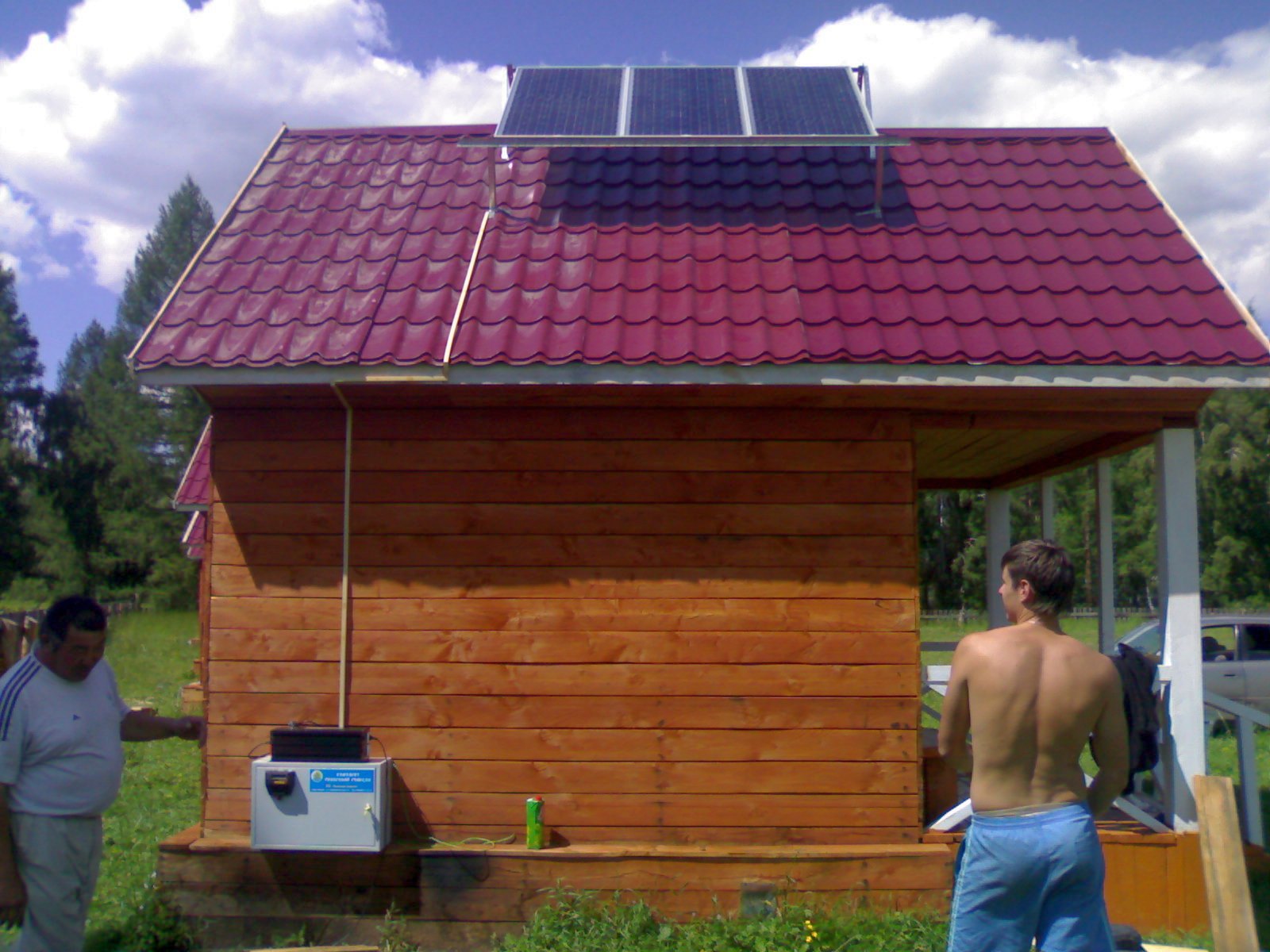
1500 W station for a small tourist base
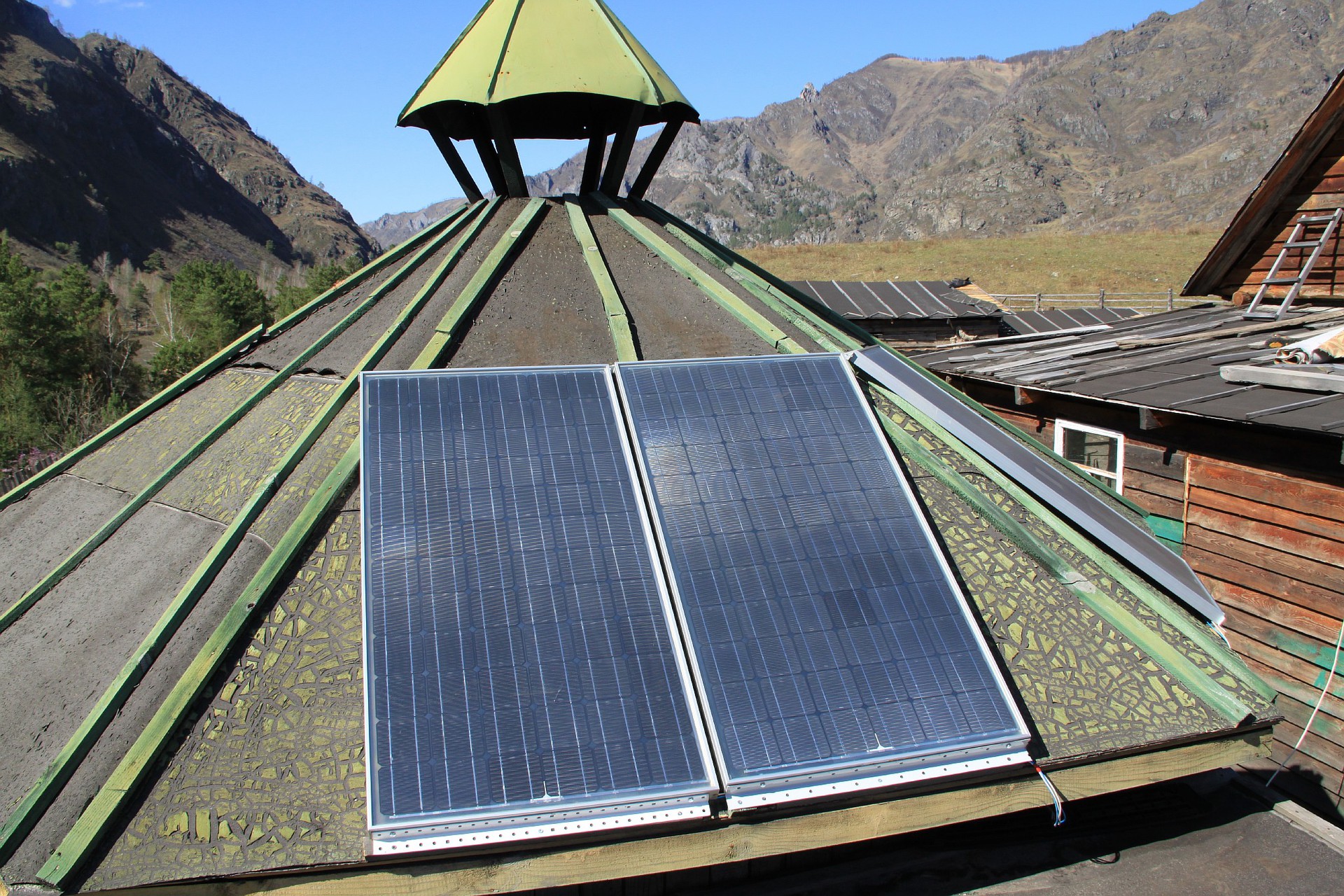
For tourist parking in Chemal
Of course, we did not put all the chips only on solar energy. Wind energy interested us no less, and we gladly set up hybrid wind-solar stations. The benefit is obvious - when there is a sun - calm, when there is no sun - there is usually wind (although not always).
The stations were put to customers with the condition that the absence of wind is not a warranty case, as it happened that the client claimed that there was a constant wind at its facility, but in fact it turned out that the wind happens there periodically and cannot seriously generate electricity.
The main problems with the operation of wind turbines were: vibrations that led to the destruction of the tail end of the generator, an imperfect braking system during hurricane winds, some other annoying little things. All defects were fixed and sent to the manufacturer, and six months later we received already updated wind generators, taking into account our wishes. Thus, we were not ashamed in front of the buyer, and the plant received valuable feedback.
A pair of photos of hybrid wind-solar stations.
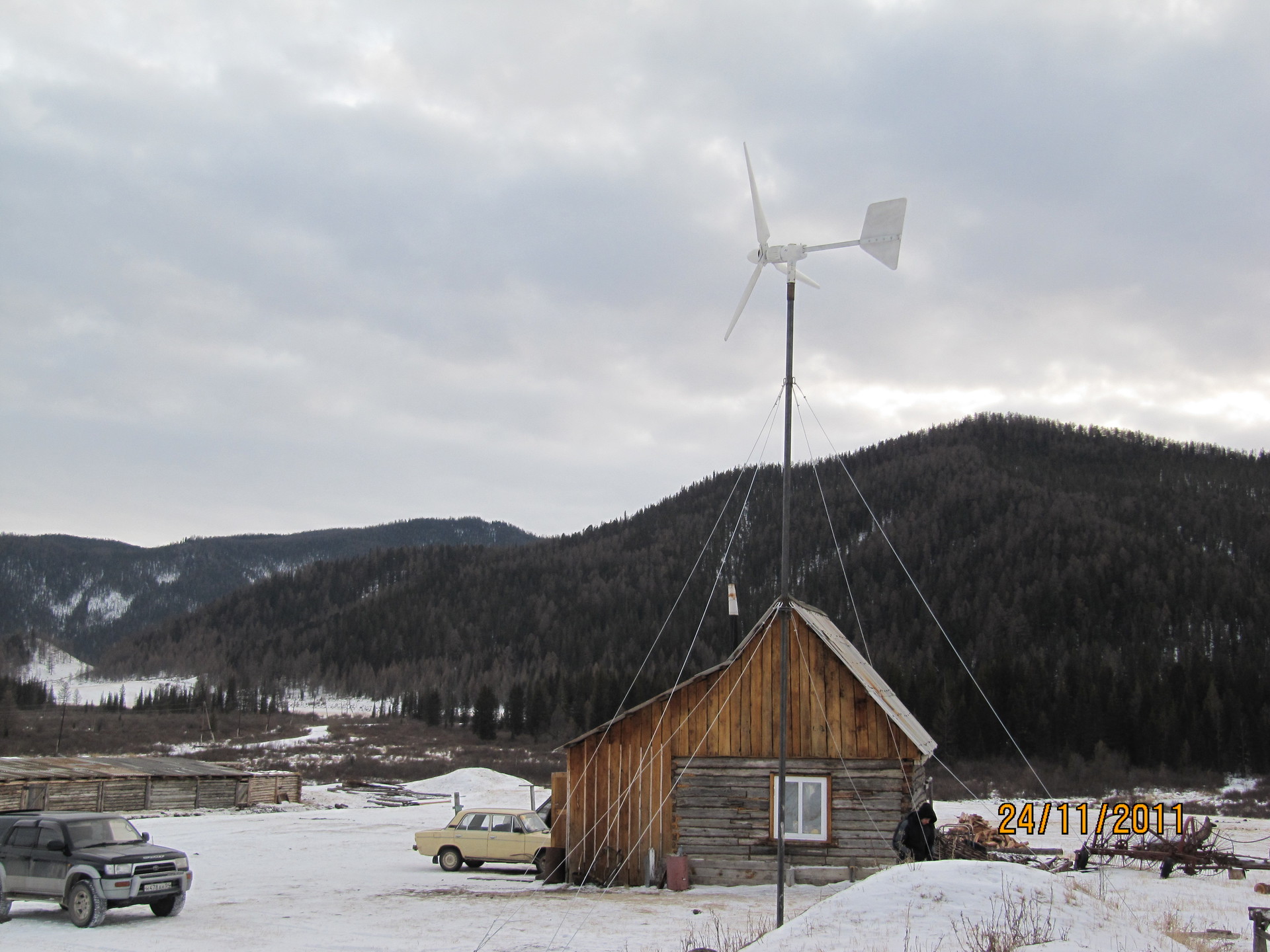


Three-phase 18 kW system in Mogochino, Tomsk Region.

VSES in with. Oro, Ust-Kansky District Altai Republic

Local rabbit interested in laughing gas in the balloon
In general, customers' responsibility was very pleased - they really listen to our recommendations, try not to overload the inverters and not do short circuit. Still, the main stream of repair equipment is the inverters, most often burned out, sometimes just buggy.
Once a year, wind turbines require maintenance - pulling bolts and connections, lubrication, wiring checks. Therefore, we arrange preventive business trips, during which we identify various faults and stop the emergence of new ones. This saves valuable time - according to Murphy’s law, customer hands-ons occur during our maximum load times.
All have customers who want to put the best of what is available. For them, we are developing solutions on American equipment, which has established itself as the most reliable (I hope this will not undermine patriotism :)). As a rule, these are wealthy and accomplished people in life, having a secluded spot somewhere in the mountains or foothills.
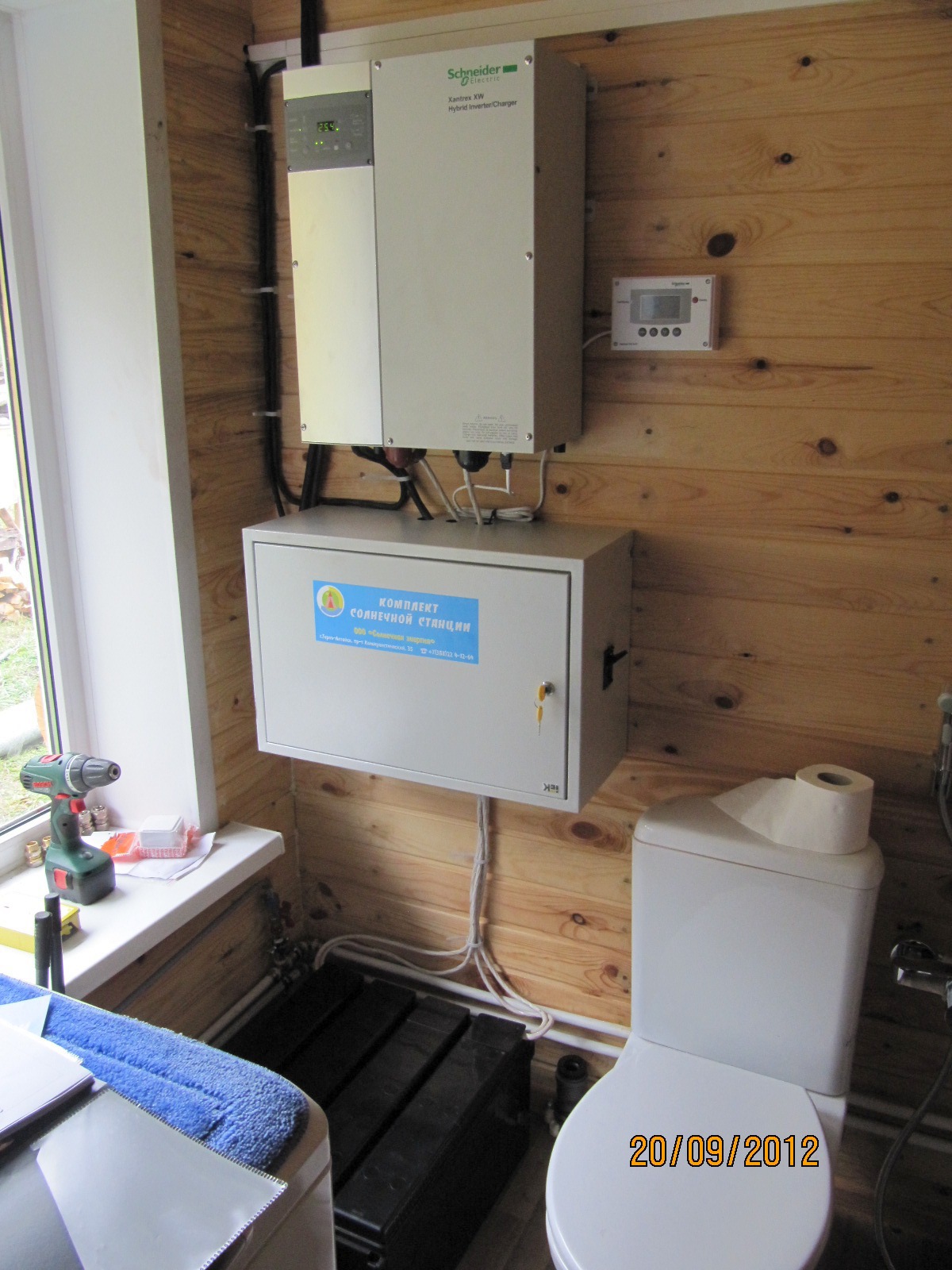
Previously, everything was provided with a diesel generator, which consumed a lot of fuel and rattled. I wanted silence.
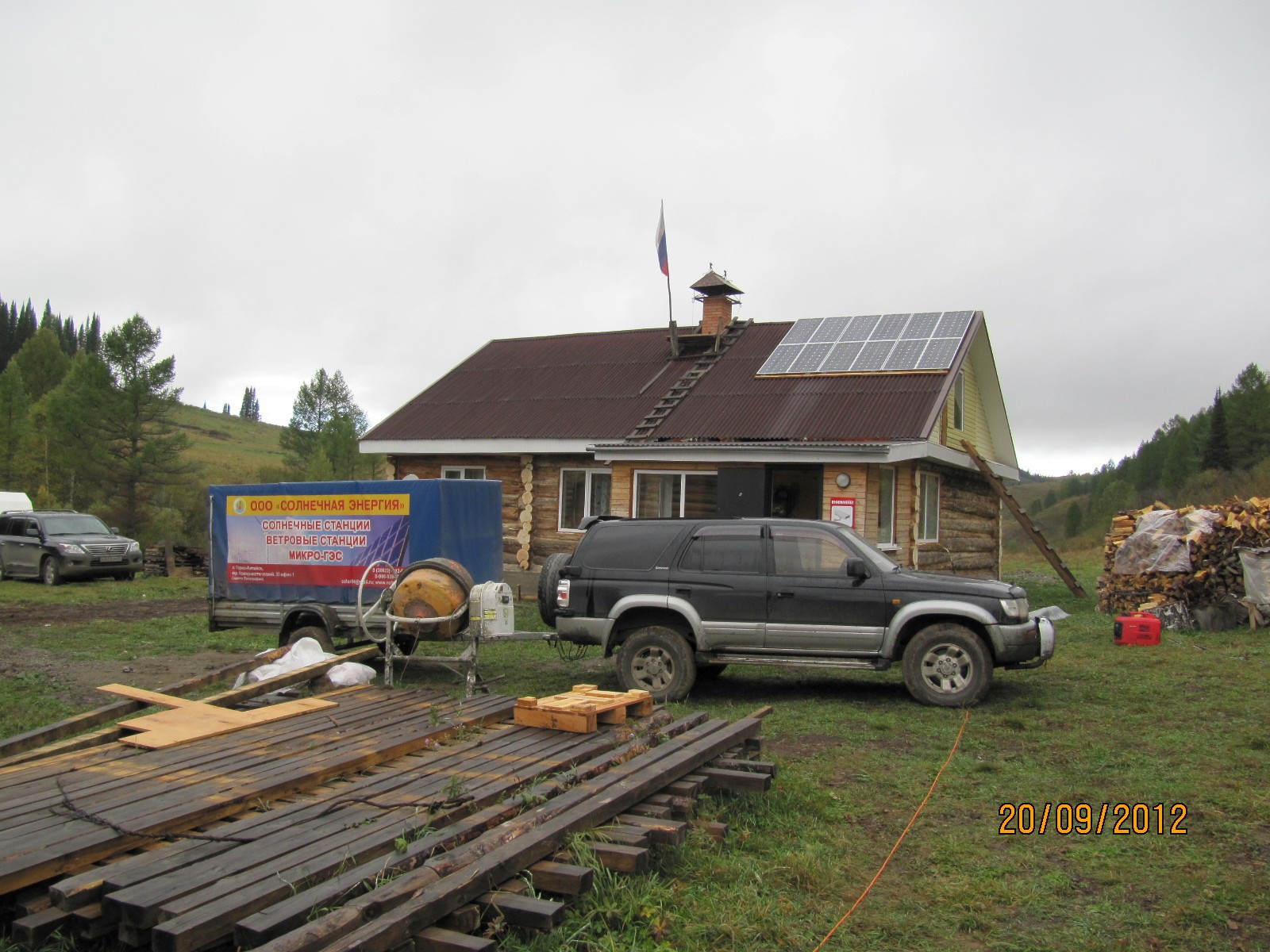
Now the diesel generator stands as a backup source of energy, and the entire electrics are powered by clean energy.
What other prejudices are left to potential customers? We can single out one of the main things - people believe that with solar batteries it is possible to solve the problem of heating. That is, to convert solar energy into electricity, and electricity into heat. But when they find out the cost of such a decision, the fervor fades away. With the current level of technology, we can only afford solar collectors, which in the cold Russian winter show not the best result. We will leave the use of heat pumps, ground batteries and other heating equipment beyond the boundaries of the article, which will be discussed in the following publications, taking into account real experience and time.
What can be said in conclusion? The market of private clients exists and develops, and cheapening of components goes into the hands of the market. Understanding that you can be relatively independent and live in a more pleasant place to live without adjusting to the system makes people build in completely unexpected places. There are communities at forums of large cities where like-minded people gather and buy out whole land plots for country cottages. The cost of connecting to traditional networks is quite high, and the timing is often completely uncertain. This is also a factor for finding alternative solutions.
Developments of scientists in this field are encouraging, perhaps in the near future solar modules with high efficiency and relatively low price per watt will become available. Now we will use what the industry offers. Players are becoming more and more, respectively, higher rates and more interesting game.
Long thought, what video can be attached to the post. See a small video report of one of the trips. Quite typical situations.
The price, of course, confused people at first, because, again, people used to pay a little for electricity. But this barrier was overcome, and closer to 2010, in cooperation with the Ministry of Tourism and Entrepreneurship of the Altai Republic, we managed to write and defend a subsidy program for energy-saving measures. It was the first, in fact, experience of social entrepreneurship, when the population in the form of farmers, business in the person of us and the state managed to solve an understandable social request - to electrify farms and increase the return from them.
Within the framework of this article, it is difficult to assess the economic effect in numbers, but one can say that many technological processes in these farms have accelerated significantly - milk was processed faster by electric separators than manually, sheep were sheared faster, shearing machines, water in the troughs was pumped on time and in the right amounts. Over the past three years, we are witnessing a trend - those who work on a farm with our established stations are not really and tend to a “civilization” with its advantages and disadvantages. Ordinary farmers immediately set up satellite television, washing-machines (yes, yes, automatic ones), especially advanced ones use 3G-Internet if operator coverage allows it, or VSAT-Internet. In a word, they do not feel detached from the general rhythm.
')
You can see a short chronology with comments, as well as other reflections on this topic under the cat:
So, the first stations were small solutions from 300 W to 1500, rarely up to 3 kW.
One of the first customers, FSUE "Altai State Nature Reserve".

(300W small station.)
But this is a rarity: Soviet-made solar batteries of the 70s on a homemade rotary device:

By the way, a special stand was made for training and demonstration purposes, which explains the principle of the station:

In the meantime, the capacities of the stations sold grew. Those stations that were 300-600 watts each were taken by the clients themselves, and there are not a large number of photographs, since the installation is elementary and any average man can handle it.
Owners of tourist bases began to apply. They put houses in picturesque places, but did not have a connection to the common grid.

1500 W station for a small tourist base

For tourist parking in Chemal
Of course, we did not put all the chips only on solar energy. Wind energy interested us no less, and we gladly set up hybrid wind-solar stations. The benefit is obvious - when there is a sun - calm, when there is no sun - there is usually wind (although not always).
The stations were put to customers with the condition that the absence of wind is not a warranty case, as it happened that the client claimed that there was a constant wind at its facility, but in fact it turned out that the wind happens there periodically and cannot seriously generate electricity.
The main problems with the operation of wind turbines were: vibrations that led to the destruction of the tail end of the generator, an imperfect braking system during hurricane winds, some other annoying little things. All defects were fixed and sent to the manufacturer, and six months later we received already updated wind generators, taking into account our wishes. Thus, we were not ashamed in front of the buyer, and the plant received valuable feedback.
A pair of photos of hybrid wind-solar stations.



Three-phase 18 kW system in Mogochino, Tomsk Region.

VSES in with. Oro, Ust-Kansky District Altai Republic

Local rabbit interested in laughing gas in the balloon
In general, customers' responsibility was very pleased - they really listen to our recommendations, try not to overload the inverters and not do short circuit. Still, the main stream of repair equipment is the inverters, most often burned out, sometimes just buggy.
Once a year, wind turbines require maintenance - pulling bolts and connections, lubrication, wiring checks. Therefore, we arrange preventive business trips, during which we identify various faults and stop the emergence of new ones. This saves valuable time - according to Murphy’s law, customer hands-ons occur during our maximum load times.
All have customers who want to put the best of what is available. For them, we are developing solutions on American equipment, which has established itself as the most reliable (I hope this will not undermine patriotism :)). As a rule, these are wealthy and accomplished people in life, having a secluded spot somewhere in the mountains or foothills.

Previously, everything was provided with a diesel generator, which consumed a lot of fuel and rattled. I wanted silence.

Now the diesel generator stands as a backup source of energy, and the entire electrics are powered by clean energy.
What other prejudices are left to potential customers? We can single out one of the main things - people believe that with solar batteries it is possible to solve the problem of heating. That is, to convert solar energy into electricity, and electricity into heat. But when they find out the cost of such a decision, the fervor fades away. With the current level of technology, we can only afford solar collectors, which in the cold Russian winter show not the best result. We will leave the use of heat pumps, ground batteries and other heating equipment beyond the boundaries of the article, which will be discussed in the following publications, taking into account real experience and time.
What can be said in conclusion? The market of private clients exists and develops, and cheapening of components goes into the hands of the market. Understanding that you can be relatively independent and live in a more pleasant place to live without adjusting to the system makes people build in completely unexpected places. There are communities at forums of large cities where like-minded people gather and buy out whole land plots for country cottages. The cost of connecting to traditional networks is quite high, and the timing is often completely uncertain. This is also a factor for finding alternative solutions.
Developments of scientists in this field are encouraging, perhaps in the near future solar modules with high efficiency and relatively low price per watt will become available. Now we will use what the industry offers. Players are becoming more and more, respectively, higher rates and more interesting game.
Long thought, what video can be attached to the post. See a small video report of one of the trips. Quite typical situations.
Source: https://habr.com/ru/post/219413/
All Articles